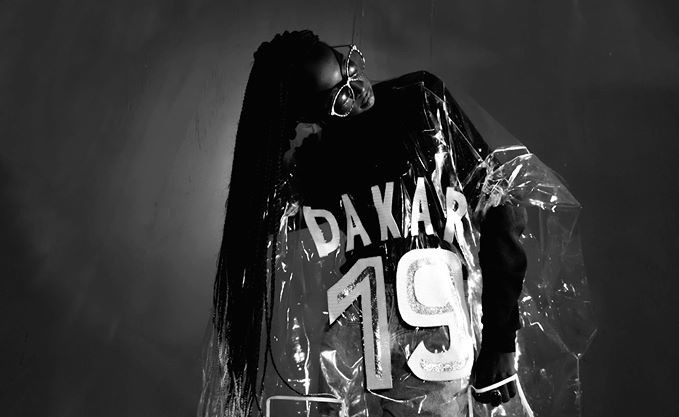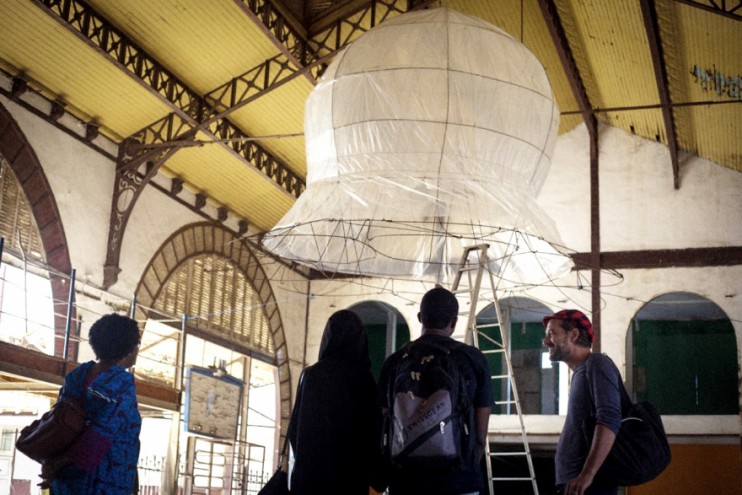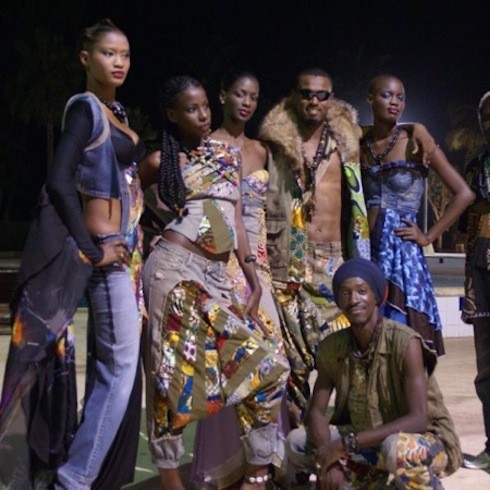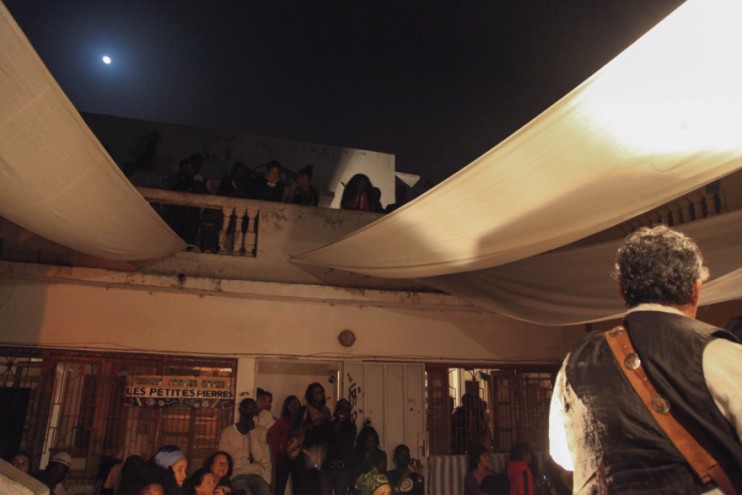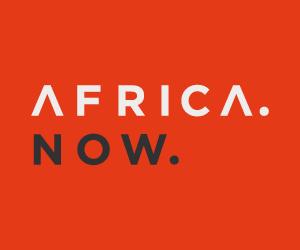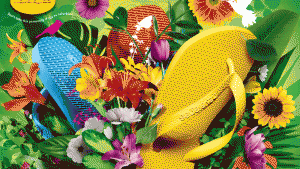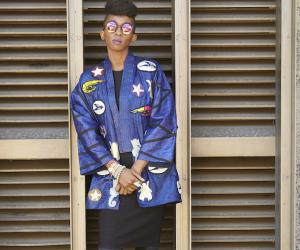Part of the Project
From the Series
It’s May 2012 and Dakar is welcoming its 10th Biennale of Contemporary African Art. Most of it happens indoors, invisible to the average Dakarois (as the city’s residents are known) who, if asked about the event, would give you a puzzled look.
The bulk of the biennale takes the form of classic art exhibitions hosted in gallery-like settings, where international guests and a few locals walk past one wall after another scanning the art on display.
This way of experiencing art is foreign to most Senegalese people.
Meanwhile, in the city’s neighbourhoods of Grand Dakar, Ouakam and Medina, a multi-disciplinary group of artists called Les Petites Pierres is busy turning the streets into interactive art spaces for the first “Festival Interference”. The event is a week-long street performance festival that the group has organised to coincide with the biennale.
Over in Medina, the oldest and most populous part of town that was originally built by the French colonial authority to separate the local population, Les Petites Pierres has transformed the area around the Gueule Tapée canal. The waterway, which leads to the Atlantic Ocean on this most Western tip of Africa, hosts one of the city’s largest secondhand clothing markets.
It is this neighbourhood, with its narrow streets teeming with life, where the city’s culture is at its most vibrant – a fitting location for a massive, multi-media block party.
Youngsters from the neighbourhood have helped clean up the area, and the Les Petites Pierres artists have adorned the canal’s adjacent buildings with murals and erected an open-air stage and catwalk. “Set Seetu”, a mellow hip-hop song produced by local musician Staz, starts to play. The song is part of the collective’s campaign to spread the message that “the spaces we inhabit are reflections of ourselves” and to encourage the city’s residents to take more pride in their environment. (“Set” means “clean” in the local Wolof language, while “seetu” is “mirror”.)
As night falls, the “La rue est à la mode” fashion show begins, featuring the work of local designers Selly Raby Kane, Doulsy, Baay Sooley and Laure Tarot. But this is no ordinary fashion show – video installations by artists Tizianna Manfredi and Marco Lena are projected onto the nearby buildings and The Daara J Family, one of the country’s original hip-hop acts, performs. See photos from the event here.
The group at the centre of this new wave of Senegalese creativity includes visual and performance artists, musicians, dancers, graphic and fashion designers, writers and theatrical performers.
French transplants Erwan Le Vigoureux and Maya Varichon, together with emerging local fashion designer Cheikha and visual artist Ndoye Douts, founded the collective in 2005 “to set a dynamic of collaboration in motion, to have a variety of artists working together on pluri-disciplinary art exhibitions and, through the amount of energies put together, build more than individuals could achieve,” says Varichon.
A graphic designer by trade, Le Vigoureux was an active street artist in Paris, who settled in Dakar at the beginning of the 2000s. Here he met Varichon, a student researching the Set Setal movement, a wave of political protest and urban regeneration by Senegalese youth in the late 1980s and early 1990s, which has been a big influence on Les Petites Pierres’ activities.
In 2009, Les Petites Pierres organised the Words and Pictures (WAPI) festival, a British Council initiative that showcases young creative talent.
“WAPI was a beginning,” says Le Vigoureux. “For it to make sense and really build something, it had to be followed by regular platforms of expression. So we came up with the idea [of further showcases] and the British Council associated with it.”
Next came the first Festival Interference in 2012, followed by another in 2013 and other events such as Selly Raby Kane’s urban-inspired fashion show, “Be Street”.
Most recently, the collective staged an ambitious production during this year’s Dak'art biennale that transformed the city’s abandoned century-old train station into a futuristic alien space station. The event launched Kane’s “Alien Cartoon” fashion collection under her Seraka clothing label, for which a giant octopus sculpture made out of wire and plastic sheeting was installed at the station. Two thousand guests turned up to witness Kane’s vision of her city in the year 2244. Models strode the ramp clad in Seraka’s bold, experimental designs. See photos from the fashion show here.
Les Petites Pierres’ activities for the 2014 biennale were a platform for cross-pollination with other African and international creatives. The Street Art Museum by Les Petites Pierres brought the biennale crowd to the underprivileged but soulful area of Damel and gave visibility to artists such as Amadou Fatoumata Ba, who has been struggling to find outlets for his furniture and sculptures made from old car tyres. The walls in the streets of Damel were opened to artists Soly Cissé, Tanc, Escif, Marie Ngom and Adjara Kane and hosted a preview with studio photos by Sidy "Skillzography" Kandji and Siaka Soppo Traoré.
During this time, Les Petites Pierres has grown into a platform that nurtures, promotes and connects creative talent in Dakar.
Its members see the city as a “space of conviviality” – the stage, canvas and meeting place for artists of different backgrounds to make their work as accessible as possible to everyday Dakarois.
The group’s name – meaning “the small stones” – alludes to its activist stance of using creativity “to change the world little by little, stone by stone; everyone is invited to contribute to build a common building.”
The collective’s headquarters in Ouakam is a two-story house known in the city for its Thursday night DJ parties. It has welcomed, through the years, most of the emerging alternative musical acts of Dakar – some of whom, such as iScience, are full-time Les Petites Pierres members. Records have been produced here, acts discovered and given a platform for wider exposure.
The walls of the house, which includes a concept store selling fashion and furniture as well as artist residences, are covered with work by artists Tanc, Escif, Grems, Amadou Tounkara and Le Vigoureux himself. It has become a window on Senegal’s emerging creative scene and a space for international artists to experience Dakar. Take a video tour of the Les Petites Pierres headquarters here.
The most visible face of Les Petites Pierres is Selly Raby Kane, who also serves as its president. A stalwart of the group, she typifies the new creative spirit that is emerging in Senegal: her adventurous designs are both rooted in Dakar’s urbanity and inspired by diverse global influences from science-fiction film to 20th-century pop art.
Fellow fashion designer Abdoul Sy, who goes by the name Doulsy, is a “Baay Fall”, a disciple of the Islamic Sufi way that preaches humility and absolute devotion to one’s spiritual guide. He had been running a casual Senegalese tailor business until he decided to express more of his creativity, and joined Les Petites Pierres.
The Baay Fall wardrobe is humble in accordance with its spiritual teachings and is made of inexpensive but stylish and colorful patchwork. Doulsy’s work draws from this tradition of fabric recycling and adds inventiveness and great artisanship. In a culture where displays of individuality are repressed, he thinks of himself as a “wandering art exhibition”. His tailoring know-how and inventiveness are well known in Dakar.
Wandering it may be too, but the work of Les Petites Pierres has a firm foothold in the populace and is fast becoming one of the most important private institutions of Dakar’s cultural landscape.
Mamadou Diallo is a Senegalese writer and publisher who founded the cultural and literary magazine RECIDIVE. He has been living in Dakar for the last four years and has written extensively on the local emerging creative scene, of which he is both an observer and participant.



